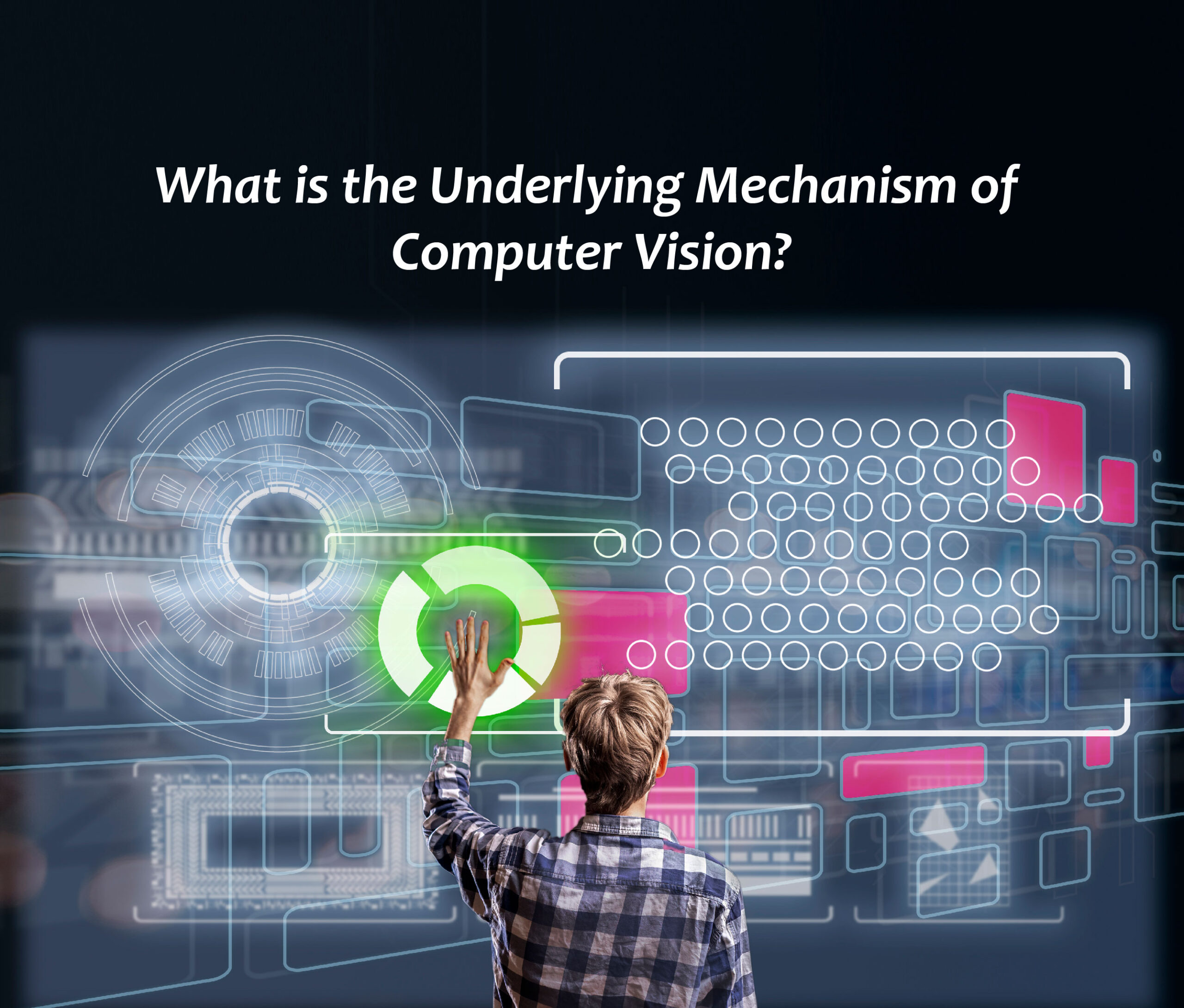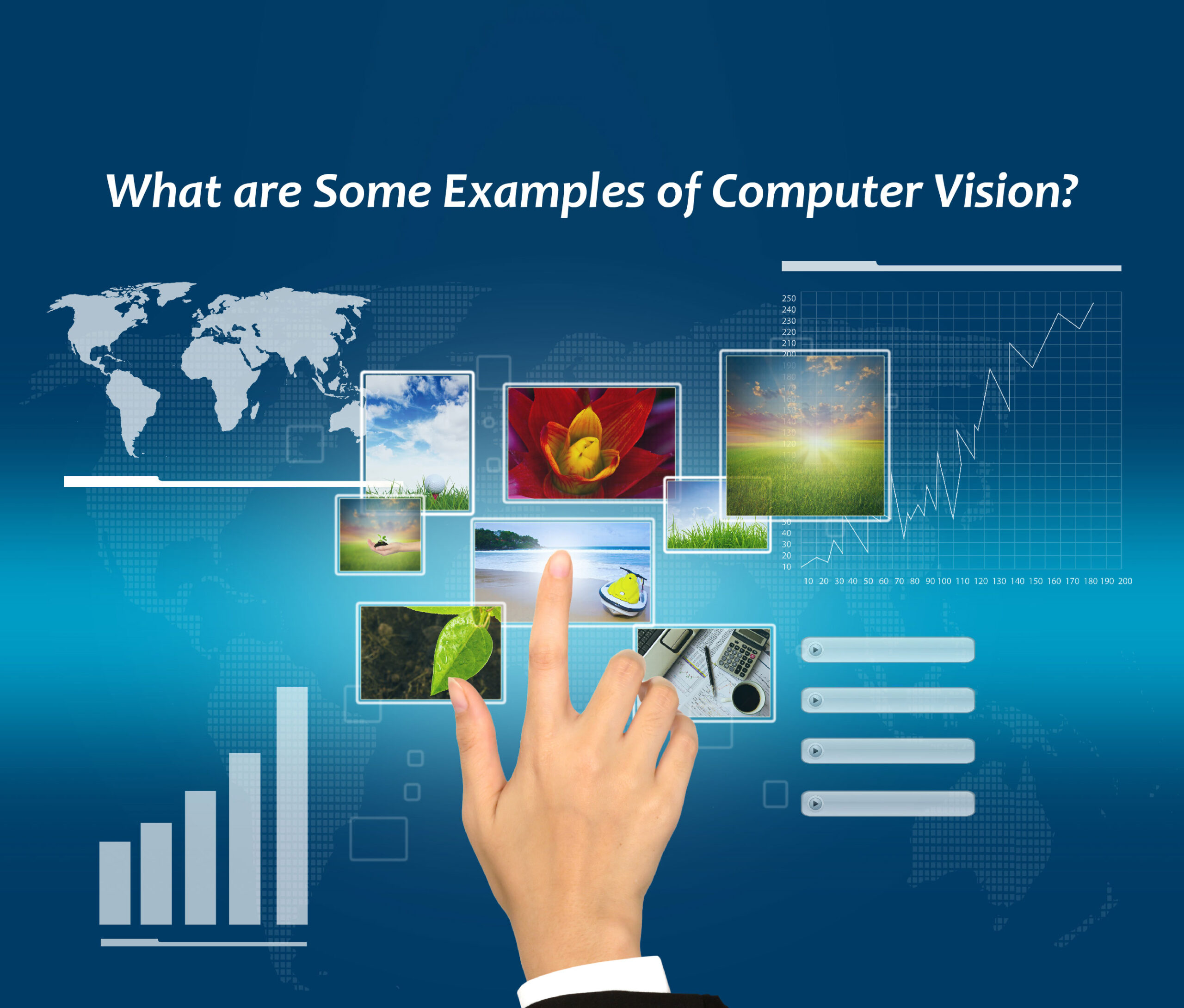Computer vision is a rapidly growing field of artificial intelligence that enables computers to understand and interpret the visual world. It has a wide range of applications, from self-driving cars to medical diagnosis to social media filters.
In this blog, we will explore the basics of this technological marvel, its various applications, and the challenges and opportunities it presents.
Whether you are a technical expert or a curious layperson, this blog is for you.
What is Computer Vision?
Computer vision, a computer science field, enables computers to identify and comprehend objects and individuals in images and videos. While AI grants computers the ability to think, computer vision empowers them to perceive, observe, and comprehend visual information. It operates in a manner similar to human vision, albeit with humans having a head start.
The advantage of human perception lies in the accumulation of contextual experiences over time, which aids in distinguishing objects, determining their distance, identifying movement, and detecting anomalies within an image.
It enables machines to learn and execute these tasks using data, cameras, and algorithms rather than relying on human sensory organs such as the retina, optic nerves, and visual cortex. By employing a system that is trained to inspect products or monitor a production asset, it becomes possible to analyze thousands of products or processes within a minute. This allows for the detection of imperceptible defects or issues that may go unnoticed by humans, ultimately surpassing human capabilities in terms of speed and efficiency.
What is the Underlying Mechanism of Computer Vision?
 Computer vision relies heavily on large volumes of data, repeatedly analyzing it to identify patterns and eventually achieve image recognition. An illustrative example of this process involves training a computer to identify car tires, which necessitates providing the system with copious amounts of tire images and related materials. This extensive exposure allows the computer to comprehend the distinguishing characteristics and recognize tires, including those without any flaws.
Computer vision relies heavily on large volumes of data, repeatedly analyzing it to identify patterns and eventually achieve image recognition. An illustrative example of this process involves training a computer to identify car tires, which necessitates providing the system with copious amounts of tire images and related materials. This extensive exposure allows the computer to comprehend the distinguishing characteristics and recognize tires, including those without any flaws.
To achieve this goal, two critical technologies are employed: deep learning and a convolutional neural network (CNN).
Machine learning employs algorithmic models that empower a computer to autonomously acquire knowledge about the context of visual data. By processing a sufficient amount of data through these models, the computer gains the ability to differentiate between various images on its own. The algorithms facilitate the computer’s self-learning process instead of relying on explicit programming to identify images. CNN assists in visual perception for machine learning or deep learning for computer vision.
It accomplishes this by analyzing images at the pixel level and assigning tags or labels to them. Through convolutions, which involve a mathematical operation on two functions to generate a third function, the CNN makes predictions about the content of the images it processes. It iteratively refines these predictions to improve accuracy and align with reality. Ultimately, CNN achieves a level of image recognition that resembles human perception.
Similar to how a person perceives an image from a distance, a CNN initially recognizes clear boundaries and basic shapes, gradually incorporating more details in each iteration of its predictions. CNNs are employed to comprehend individual images. Conversely, a recurrent neural network (RNN) serves a similar purpose in video applications, assisting computers in understanding the relationship between pictures within a sequence of frames.
What is Computer Vision Syndrome?
The increased use of computers in homes and offices in the 21st century has led to a rise in health risks, particularly for the eyes. Computer Vision Syndrome (CVS) is a common problem for individuals who spend a lot of time in front of computer screens.
While CVS does not cause permanent eye damage, it can cause pain and discomfort, impacting work performance and leisure activities. However, preventive measures are available to alleviate CVS symptoms. Notably, Scheie Eye Institute’s General Ophthalmology Service offers various techniques for CVS prevention.
What are Some Examples of Computer Vision?
 Below are some well-known examples:
Below are some well-known examples:
- Image classification is the process of analyzing an image and categorizing it into specific classes, such as identifying whether it contains a dog, an apple, or a person’s face. Its main function is to accurately predict the class to which a given image belongs. This technology can be utilized by social media companies, for instance, to automatically detect and separate objectionable images that users upload.
- Object detection involves utilizing image classification to recognize a specific category of images and subsequently locating and recording their presence within an image or video. Instances include the identification of defects on a production line or the detection of machinery in need of maintenance.
- Object tracking involves monitoring the movement of an object after its detection. This process is commonly carried out using a series of sequential images or live video streams. Autonomous vehicles provide a practical example of the need for object tracking, as they must not only identify and detect objects such as pedestrians, other vehicles, and road structures but also track them in motion to prevent accidents and adhere to traffic regulations.
- Content-based image retrieval (CBIR) is a technique that allows for browsing, searching, and retrieving images from extensive data collections by analyzing the image content instead of relying on metadata tags. By implementing automatic image annotation, CBIR can eliminate the need for manual image tagging and enhance digital asset management systems, improving the accuracy of search and retrieval processes.
Final Words
Computer vision has the potential to have a positive impact, but responsible and ethical usage is crucial. Fair algorithms and safeguarding privacy and security are key to ensuring responsible technology utilization. This offshoot of AI could significantly improve our lives in many ways.


